This article was medically reviewed by Eric Baron, DO. Dr. Eric P. Baron is a staff ABPN (American Board of Psychiatry and Neurology) board certified Neurologist and a UCNS (United Council for Neurologic Subspecialties) Diplomat board certified in Headache Medicine at Cleveland Clinic Neurological Institute, Center for Neurological Restoration – Headache and Chronic Pain Medicine, in Cleveland, Ohio. With over 15 years of experience practicing medicine, he specializes in helping patients with headaches, migraines, and facial pain. Dr. Baron holds a BS in Biology from the University of Toledo and a DO from The Ohio University Heritage College of Osteopathic Medicine. Following his medical education, he completed his neurology residency and fellowship in headache medicine at Cleveland Clinic. Dr. Baron has authored publications in journals such as The Journal of Headache and Pain and was named one of “America’s Top Physicians."
wikiHow marks an article as reader-approved once it receives enough positive feedback. This article received 18 testimonials and 100% of readers who voted found it helpful, earning it our reader-approved status.
This article has been viewed 1,277,230 times.
Even one second of a migraine is too long to experience the pain and other side effects. Stop the suffering as soon as possible by putting yourself in a migraine-soothing environment and trying various natural remedies or medications believed to help treat these throbbing headaches. Keep in mind that you may need to combine treatments — environmental treatments will likely need to be combined with medication to help break the cycle of the migraine.
Steps
Trying Natural Remedies
-
1Take the right supplements.[1] Supplements that studies suggest may help rid you of your migraine include vitamin B2, feverfew, melatonin, butterbur, co-Q10 and magnesium.
- Butterbur-based supplements are among the most helpful and are thought the prevent migraines and reduce their severity. It lessens inflammation and stabilizes blood flow while serving as a beta-blocker. As a result, it prevents blood vessel spasms. Take a dose of 50 mg and make sure that the supplement you use is labeled "PA Free."
- Vitamin B2, also called riboflavin, has also been known to reduce the frequency and severity of migraines. Taking 400 mg of the vitamin daily can cut the frequency of your symptoms in half, and taking it while a migraine is already in progress may also temporarily soothe the pain.
- Feverfew, melatonin, and Co-Q10 (coenzyme Q10) may or may not help to reduce the severity of your migraine after it begins. The good news though is that steady doses of any of these can help to decrease the overall frequency of migraine attacks.
- Magnesium has mixed results. A 500 mg supplement can help reduce the severity of a migraine if that migraine is associated with a menstrual cycle; otherwise, its usefulness is debatable. Try taking this with riboflavin and butter bur in practice as a daily preventative regimen.
-
2Make tea with lavender or other helpful herbs. Herbal teas can soothe your body and reduce the tension responsible for part or all of your migraine. As a result, you may find your migraine fading faster. Lavender, ginger, peppermint, and cayenne pepper are all thought to help.
- Lavender reduces blood vessel inflammation and is generally the most effective herbal remedy for anxiety, stress, and migraines triggered by stress. In addition to sipping on lavender herbal tea, you could also place sachets or hot packs of dried lavender over your eyes to relieve a migraine as it starts.
- Ginger, peppermint, and cayenne all have natural pain-relieving properties. Ginger and peppermint are good at reducing any nausea associated with your migraine. Note that ginger can thin blood, though, so it should be avoided if you are on a blood-thinner.
- Make an herbal tea capable of chasing away your migraine by steeping a pinch of cayenne pepper, 1 inch (2.5 cm) of fresh ginger, and 1 tsp (5 ml) of dried peppermint in 2 cups (500 ml) boiling water for 15 minutes.
Advertisement -
3Consider consuming a little caffeine. Caffeine is a paradox when it comes to migraines. Too much can bring a migraine on, but taking a little caffeine after a migraine comes upon you can actually help the pain to go away.
- Only take a small dose of caffeine: one soda, one cup of coffee, one cup of tea, or one chocolate bar is sufficient. Avoid energy drinks high in caffeine.
- Note that this generally only works if your migraine was not originally triggered by caffeine.
-
4Massage your temples and neck. Migraines are closely linked to tension. Sometimes, giving yourself a quick, simple massage can relax your muscles and blood vessels enough to ease your symptoms.[2]
- Use your index and middle fingers on both hands to gently massage your temples, the sides of your neck, and the back of your neck. Apply firm but gentle pressure in small, circular strokes.
- To increase the effectiveness of this technique, dip your fingers in ice cold water before you begin. The cold water can cause your blood vessels to constrict, slowing the rush of blood to your head as a result.
-
5Treat a mild migraine with gentle aerobic exercise. As long as the pain has not made moving around unbearable for you, light aerobic exercise can get your blood flowing to other areas of your body and cause your migraine to vanish.
- Aerobic exercise worth trying during a migraine may include brisk walking or jogging, cycling, yoga, or swimming.[3]
- As your heart pumps, your blood circulation will improve and stabilize throughout your body, causing the blood to stop rushing to your head.
- Additionally, exercise is a good way to relax and get your mind off any stresses that may have triggered the migraine.
Trying Medication
-
1Take an over-the-counter pain reliever. Nonsteroidal anti-inflammatory drugs and analgesics reduce migraine pain by reducing blood vessel inflammation.
- Nonsteroidal anti-inflammatory drugs include Naproxen and Ibuprofen. Analgesics include Aspirin and Acetaminophen.[4]
- For this treatment to be most effective, you should take the painkiller within 30 minutes of your first migraine symptoms. It should still work even if you wait longer than that, but the migraine may last a bit longer.
- Avoid taking these drugs more than twice a week. Doing so can cause you to undergo rebound migraines once the medication wears off.
-
2Try an over-the-counter pain reliever with caffeine. Some non-prescription drugs combine simple analgesics with a low dose of caffeine. The caffeine narrows your blood vessels and makes these pain relievers more effective.
- These drugs, such as Excedrin migraine, usually combine acetaminophen or aspirin with caffeine.
- Studies suggest that these drugs can work up to 20 minutes faster than drugs with no caffeine.
- As with other over-the-counter pain killers, you should take the drug within 30 minutes of your first symptoms and avoid taking the drug more than twice a week.
-
3Get a prescription for triptans. These drugs work by constricting your blood vessels, thereby limiting the rush of blood to your head. Studies and trials suggest that many migraine sufferers experience significant relief within one hour of taking the drug, with complete relief coming in as little as two hours.[5]
- Avoid taking triptans more than 17 times per month. Doing so can cause you to experience rebound migraines since your body will become accustomed to existing on the drug.
- These medications can cause heart attack and/or stroke by constriction of the blood vessels. If you have heart-related problems or clotting abnormalities you should not use triptans.
- Triptans are clinically proven to be the number one most effective treatment for migraines.
-
4Ask your doctor about dihydroergotamine or ergotamines. These prescription drugs also constrict the blood vessels in your brain. In addition to soothing the pain, they are also known to reduce the nausea and light sensitivity commonly associated with migraines.
- These drugs are usually administered as nasal sprays or injections.
- An injection might be given for a one-time treatment, but if you frequently experience migraines, your doctor may prescribe a nasal spray version.
Trying Environmental Treatment
-
1Shut off the lights. Many migraines are triggered by sensory stimuli, such as bright or flickering lights. Calm your senses down by turning the lights off and pulling down the shades, or by moving into a dark room.[6] [7]
- Stay in the dark room until your migraine goes away, or for as long as possible.
- Wear sunglasses when necessary. If you have to be out and about and are unable to get to an area with soft light or no light, wear polarizing sunglasses to protect your eyes from the brightest parts of the light spectrum. This may not be quite as effective as spending a few minutes in a dark room, but it will usually still help.
-
2Eliminate as much noise as possible. As with light, sound is another sensory stimuli known to trigger migraines. Turn off all background noise, such as radios and televisions, or move to a quiet, calm spot.[8]
- If you cannot go to a separate room, wear noise-canceling headphones over your ears to block out external noise.
- Some individuals find silence stressful or unnerving. If this is the case, run a white noise machine or air purifier in the background to provide soothing ambient sound. You could also try soothing music; however, avoid loud or exciting tunes.
-
3Lie down and rest. Stress and lack of sleep are other common triggers for migraine headaches. Take a few minutes to lie down on your back and close your eyes the next time a migraine comes on.
- Rest anywhere from five to 30 minutes to help your migraine go away.
- Note, however, that some migraines are caused by getting too much sleep. If this may be one of your triggers, you should avoid lying down any longer.[9]
-
4Take a deep breath. Deep breathing exercises can relax the body, thereby releasing any tension that might be contributing to your migraine.[10]
- Lie on your back with a pillow below your head and a second pillow below your knees. Your legs should be somewhat bent.
- Place your dominant hand on your upper chest and your other hand below your rib cage.
- Breathe in slowly through your nose until your stomach pushes against your non-dominant hand.
- Breathe out slowly through pursed lips as you tighten your stomach.
- Keep your dominant hand still throughout the entire process.
- Do this routine for about five minutes.
-
5Apply a cold compress. A cold washcloth applied to your achy head can cause the blood vessels there to contract, which slows down the rush of blood to your head.[11] [12]
- Wet a soft, clean washcloth with cold water and place it over your forehead or on the back of your neck. Let it sit for 10 to 15 minutes. Take a 10 to 15 minute break before applying the compress again, and continue in this pattern until your migraine goes away.
- Note that in some instances, however, cold temperatures can actually make a migraine headache feel worse. If the pain increases within the first 5 minutes of treatment, stop immediately and try something else.
-
6Take a cold shower, followed by a sleep in a cool room. Stand under a cold shower with the water running over the top of your head for at least 15 minutes. Give yourself a head massage while you shampoo. This helps to reduce the tensions in your body while releasing the heat from your scalp.
- Lightly squeeze the excess water from your hair, but keep it damp. Do not dry your hair.
- Lie down in a cool room while your hair is still damp and try to sleep for a while. You can place a towel over your pillow if you are worried about it being wet.
-
7Modify your diet.[13] There are often certain foods that can trigger migraines in people; what the triggers are will vary from individual to individual. You can determine any dietary triggers you may have by recording what you ate prior to the onset of a migraine headache, and looking to see if there are any patterns over time. Common dietary triggers of migraine headache include:
- Foods containing aspartame or MSG
- Alcohol
- Chocolate
- Cheese
- Salami
- Caffeine
Foods to Eat and Avoid with a Migraine
Expert Q&A
-
QuestionWhat are some ways that I can manage pain from a migraine?
 Sari Eitches, MBE, MDDr. Sari Eitches is an Integrative Internist who runs Tower Integrative Health and Wellness, based in Los Angeles, California. She specializes in plant-based nutrition, weight management, women's health, preventative medicine, and depression. She is a Diplomate of the American Board of Internal Medicine and the American Board of Integrative and Holistic Medicine. She received a BS from the University of California, Berkeley, an MD from SUNY Upstate Medical University, and an MBE from the University of Pennsylvania. She completed her residency at Lenox Hill Hospital in New York, NY and served as an attending internist at the University of Pennsylvania.
Sari Eitches, MBE, MDDr. Sari Eitches is an Integrative Internist who runs Tower Integrative Health and Wellness, based in Los Angeles, California. She specializes in plant-based nutrition, weight management, women's health, preventative medicine, and depression. She is a Diplomate of the American Board of Internal Medicine and the American Board of Integrative and Holistic Medicine. She received a BS from the University of California, Berkeley, an MD from SUNY Upstate Medical University, and an MBE from the University of Pennsylvania. She completed her residency at Lenox Hill Hospital in New York, NY and served as an attending internist at the University of Pennsylvania.
Integrative Internist You can always take migraine medication to help ease inflammation, but if you don't have any, try massaging your head or meditating to help you relax.
You can always take migraine medication to help ease inflammation, but if you don't have any, try massaging your head or meditating to help you relax.
References
- ↑ http://www.mayoclinic.org/diseases-conditions/migraine-headache/basics/alternative-medicine/con-20026358
- ↑ http://www.mayoclinic.org/diseases-conditions/migraine-headache/basics/alternative-medicine/con-20026358
- ↑ Eric Baron, DO. Board Certified Neurologist. Expert Interview. 13 September 2021.
- ↑ Eric Baron, DO. Board Certified Neurologist. Expert Interview. 13 September 2021.
- ↑ Eric Baron, DO. Board Certified Neurologist. Expert Interview. 13 September 2021.
- ↑ Eric Baron, DO. Board Certified Neurologist. Expert Interview. 13 September 2021.
- ↑ https://www.mayoclinic.org/diseases-conditions/migraine-headache/in-depth/migraines/art-20047242
- ↑ https://www.mayoclinic.org/diseases-conditions/migraine-headache/in-depth/migraines/art-20047242
- ↑ http://www.mayoclinic.org/diseases-conditions/migraine-headache/basics/lifestyle-home-remedies/con-20026358
- ↑ https://www.mayoclinic.org/diseases-conditions/migraine-headache/in-depth/migraines/art-20047242
- ↑ Eric Baron, DO. Board Certified Neurologist. Expert Interview. 13 September 2021.
- ↑ https://www.mayoclinic.org/diseases-conditions/migraine-headache/in-depth/migraines/art-20047242
- ↑ http://www.hopkinsmedicine.org/healthlibrary/conditions/adult/nervous_system_disorders/migraine_headaches_85,P00814/
About This Article
If you need to get rid of a migraine fast, try drinking a cup of coffee or eating some chocolate, since a little caffeine can curb your pain once a migraine starts. If you’re at home, try lying down in a dark room and resting for half an hour or so to see if your migraine goes away. You might also try firmly massaging your temples and neck, since migraines are linked to muscle tension. If natural methods don’t work for you, take an over-the-counter pain reliever like Naproxen or Ibuprofen. Just keep in mind that painkillers are most effective within the first 30 minutes of your migraine. To learn how to use supplements to prevent migraines, read more from our Medical co-author!
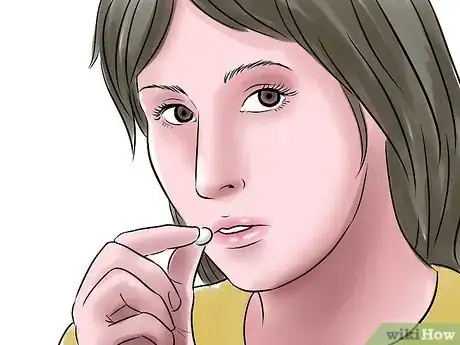
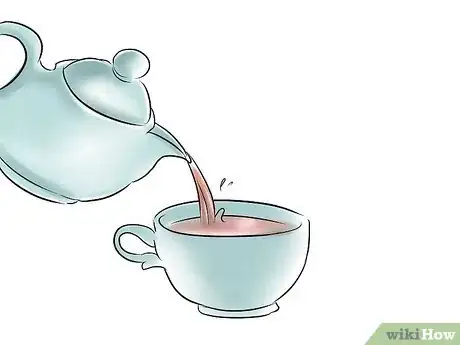
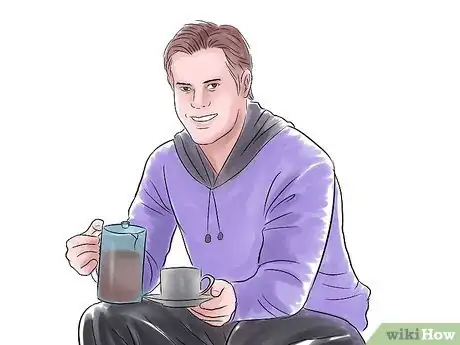
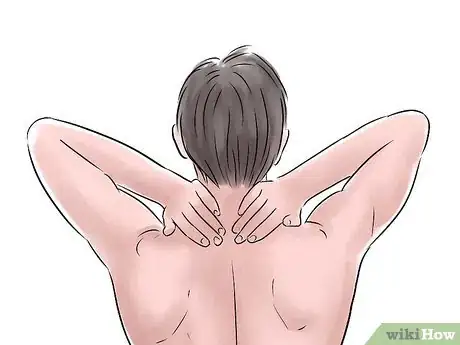
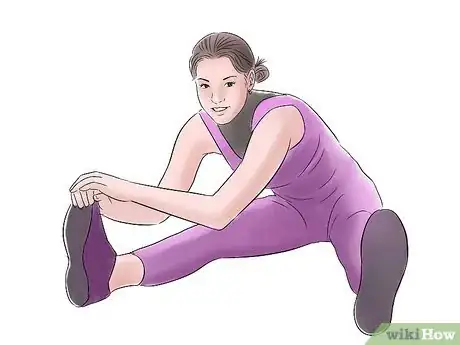

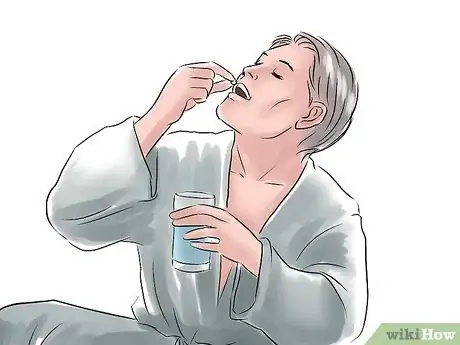
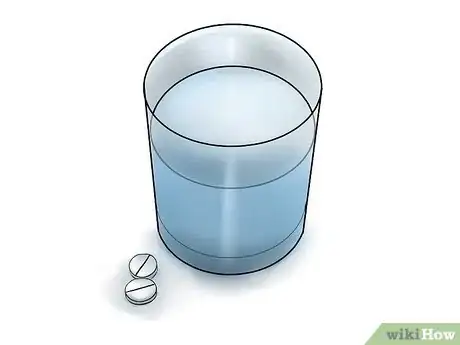
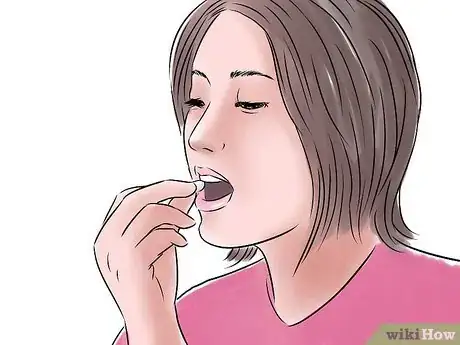
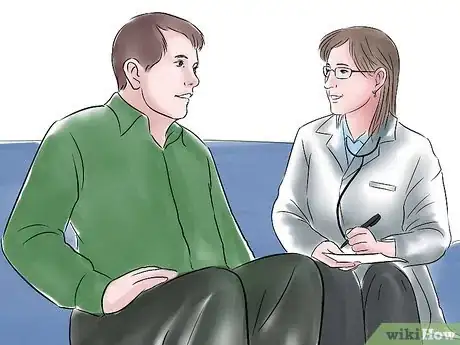
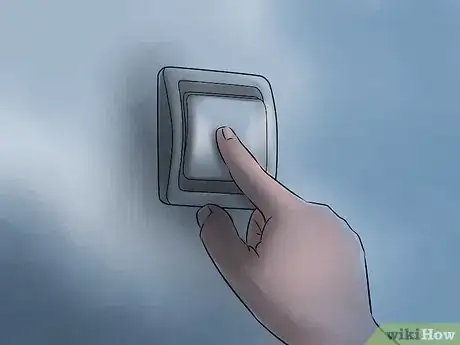
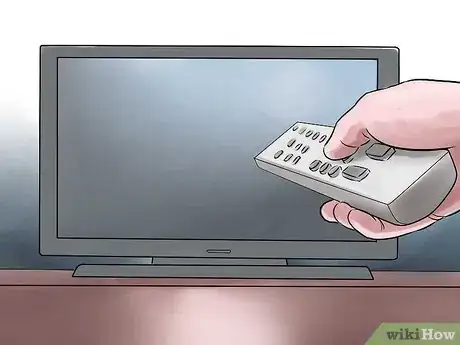
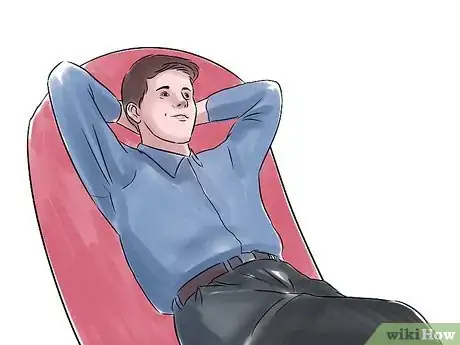
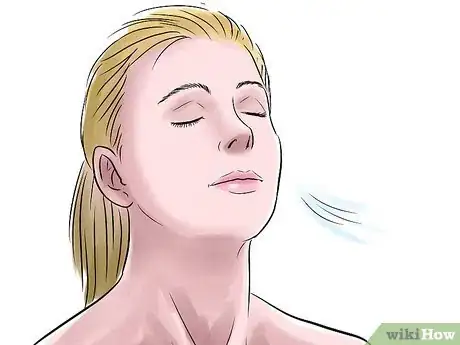
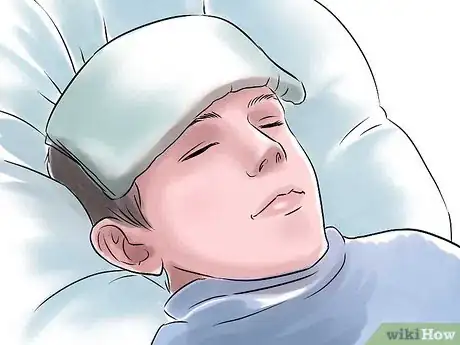
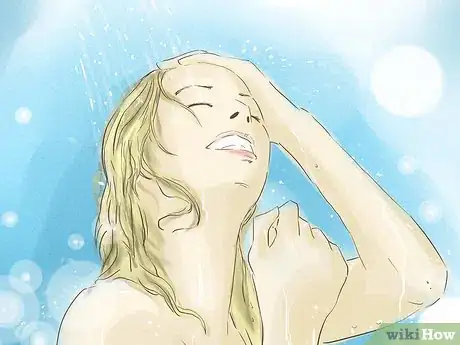


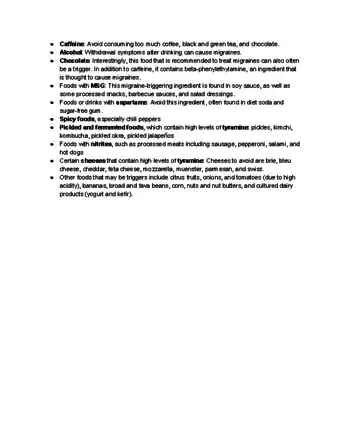
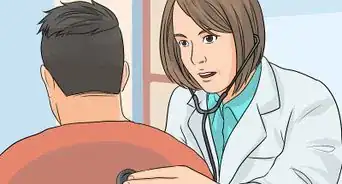
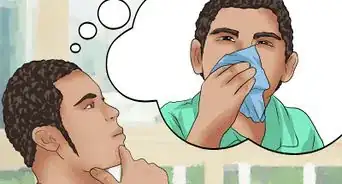
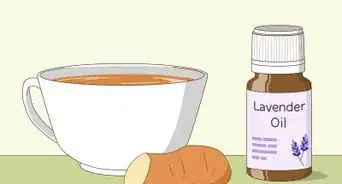
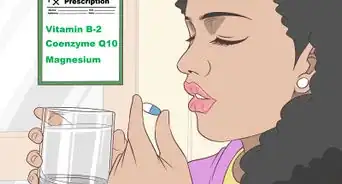
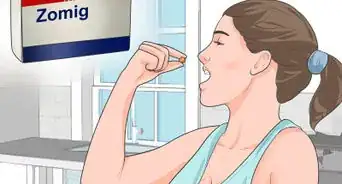
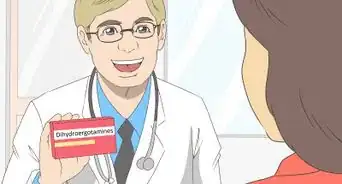


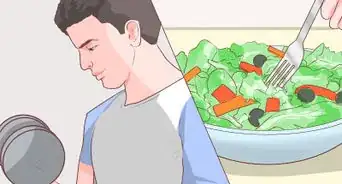
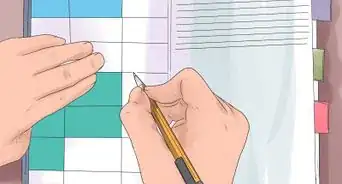











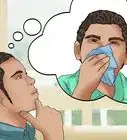
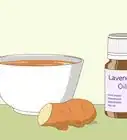




































Medical Disclaimer
The content of this article is not intended to be a substitute for professional medical advice, examination, diagnosis, or treatment. You should always contact your doctor or other qualified healthcare professional before starting, changing, or stopping any kind of health treatment.
Read More...